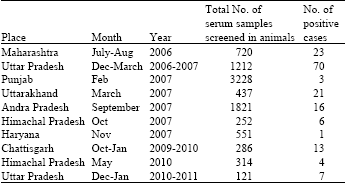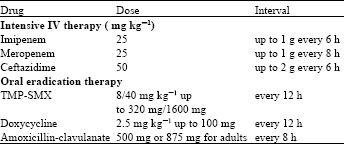Review Article
Glanders-A Re-emerging Zoonotic Disease: A Review
Department of Veterinary Epidemiology and Preventive Medicine, Uttar Pradesh Pandit Deen Dayal Upadhayay Pashu Chikitsa Vigyan Vishwavidyalay Evum Go-Anusandhan Sansthan (DUVASU), (U.P.), 281001, Mathura, India
Mani Saminathan
Division of Pathology, Indian Veterinary Research Institute, Izatnagar, 243122, (U.P.) Bareilly, India
Neha
Department of Veterinary Epidemiology and Preventive Medicine, Uttar Pradesh Pandit Deen Dayal Upadhayay Pashu Chikitsa Vigyan Vishwavidyalay Evum Go-Anusandhan Sansthan (DUVASU), (U.P.), 281001, Mathura, India
Ruchi Tiwari
Department of Veterinary Microbiology and Immunology, Uttar Pradesh Pandit Deen Dayal Upadhayay Pashu Chikitsa Vigyan Vishwavidyalay Evum Go-Anusandhan Sansthan (DUVASU), (U.P.), 281001, Mathura, India
Kuldeep Dhama
Division of Pathology, Indian Veterinary Research Institute, Izatnagar, 243122, (U.P.) Bareilly, India
Shoor Vir Singh
Laboratory of Microbiology, Division of Animal Health, Central Institute for Research on Goats (CIRG), Mathura, India










